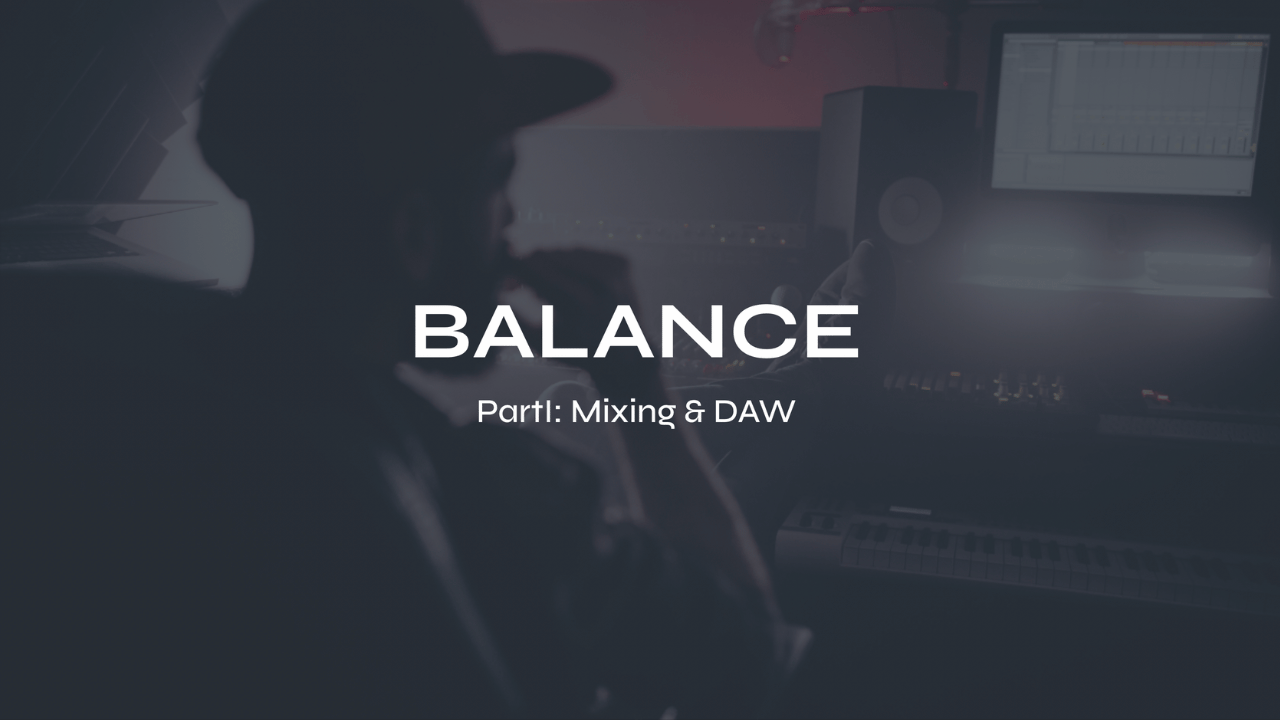The Art of Critical Listening: Elevating Your Music Production Skills

In music production, critical listening and song analysis is an essential skill that sets apart the novices from the professionals. It's not just about hearing a song and enjoying it; critical listening is about analyzing every element of sound and understanding how they fit together to create a cohesive masterpiece. Whether you're a seasoned producer or just starting out in your career, mastering the art of critical listening can elevate your skills and take your productions to new heights. In this article, we'll explore what critical listening means in music production, why it matters so much, and some tips for developing your skills so that you can become a better producer by actively 'listening' to music!
 Check out my Mixing & DAW live online course
Check out my Mixing & DAW live online course
The Importance of Active Listening in Music Production
Active listening is a crucial component of the critical listening process in music production. It involves actively engaging with the sounds and distinguishing between different elements like melody, rhythm, harmony, tone, and texture. Active listeners pay attention to every detail of sound without judgement or distraction by external factors such as noise and emotions. Active listeners can pinpoint imperfections in a track that may be overlooked by casual audiences. They understand how various technical aspects work together to create soundscapes that evoke specific emotions and messages. Active listening also allows producers to learn from other artists' works and incorporate that knowledge into their own projects.
The Importance of a Good Listening Environment
The home studio environment in which you listen to music plays a significant role in your ability to critically analyze it. A good listening environment should be free from external disturbances and interference that can affect the quality of sound. This includes minimizing outside noise, controlling the room's acoustics with some soundproofing, and ensuring that equipment is set up optimally for accurate audio reproduction. A good listening environment has psychological benefits that aid critical thinking. Listening to music in a vibey room that allows for relaxation and focus can help one remain attentive to detail during production analysis. It also enables producers or listeners to pay attention more accurately to both subtle and dominant sounds that they may have overlooked.

Download my FREE Home Studio Setup Guide
Understanding the Elements of Sound: Frequency, Dynamics, and Timbre
Frequency, or pitch, refers to how high or low a sound is and it can greatly impact the emotional impact of a track. Dynamics, or amplitude, indicates how loud or soft a particular note is played; this can vary throughout a song and help create tension and release. Timbre involves differentiating between instruments with similar pitches through their unique harmonic qualities that stem from factors like instrument type as well as the notes or chords that are played. Taking these elements into account through critical listening allows producers to understand what makes certain songs stand out above others in terms of emotional resonance and technical excellence. You'll gain the ability to arrange sounds effectively so they flow together smoothly - allowing each piece to enhance the musical narrative until collectively culminating in something awesome.
Arrangement and Song Structure: How to Identify Key Elements
Analyzing the arrangement and structure of a music production is critical to understanding its components and how they work together. It involves breaking down the instrumentation of the track into individual parts, like drums, basslines, melodies, chords, and vocals. This allows you to identify the key musical elements and evaluate their impact on the overall sound. One important aspect of analyzing arrangement and structure is understanding how these components are revealed throughout the song. Are there distinct sections such as verses, choruses, bridges or do certain instruments come in at specific times? How does this affect the listener's experience? These questions can even provide insights into the artist's creative process.
Another essential element to consider when analyzing arrangement and structure is identifying common chord progressions that appear in many famous tracks in popular music genres; think about blues songs with standard 12-bar chord patterns that have common harmonic movement arrangements every musician should know about if they intend on making commercially successful music productions. Determining these technical aspects takes time but mastering what each crucial component brings for your audience makes it worth much more than time invested!

Download my FREE Music Production Resource Guides. Magic settings for EQ, Compression & Reverb
Analyzing EQ, Dynamics and Panning
EQ is the tonal sculpting done to each track to give it independent space in the mix. Dynamics refer to the instruments’’ volume variation throughout a song. By adjusting levels, compressing certain elements, or adjusting the frequencies with EQ, producers can design musical arrangements that vary in intensity and tone keeping listeners engaged. Panning refers to the placement of sounds within the stereo spectrum - essentially, where each instrument sits on the left-right axis. Panning can help create an immersive listening experience, placing different instruments around the listener's head and giving each element its own space within the mix. Panning can contribute to an overall sense of balance; by ensuring no single element dominates one side over another (unless intended), producers can achieve a well-balanced mix that feels pleasing to listen to.
Identifying and Correcting Common Mixing Mistakes
Mixing is one of the most important steps of music production, and even the most skilled producers can make mistakes in this process. Being able to identify these common mixing mistakes is crucial to being able to produce your own high-quality final product. Some frequent errors include over (or under) use of reverb and delay, misjudging bass frequencies, overlooking phase cancellation issues, or over compression. Reverb and delay effects are excellent tools for creating space in mixes but excessive application of these can lead to distant, muddy or indistinct sound quality. Emphasizing low mid-range frequencies while neglecting low-end ones could result in an unbalanced mix where essential elements are lost. Phase cancellation happens when two identical signals become out-of-phase with one another resulting in decreased volume levels; it's important to understand how complex waveforms interact to avoid this phenomenon. Overcompression limits dynamic range leading to flatness or lack of energy in performances.
Correcting these types of mixing errors involves developing critical listening skills that enable you to identify problematic areas promptly. For example, referencing mixes on various audio systems (such as headphones or studio monitors) will help spot frequency imbalances better than relying only on one system. Using visualizers like a phase meter and spectral analyzer provides real-time analysis allowing easy recognition of frequency and phase-cancellation issues and other audio problems quickly.

The Benefits of Continued Practice and Improvement
Practice and improvement are required for anyone looking to master the art of critical listening in music production. When you have a deep understanding of each element of sound, you're able to identify flaws, adjust levels, and make impactful changes that take your productions to a higher level. Without consistent practice and determination to improve, it's easy to plateau or fall behind as new technologies develop. Another benefit of continued practice is increased efficiency. As you become more familiar with different aspects of production and sharpen your critical listening skills, you'll be able to quickly identify problems and find solutions with ease. This will save time on the overall production process by allowing you to make corrections sooner rather than later.
In summary, mastering the art of critical listening takes dedication, patience and ongoing training - but it is an investment in yourself worth making if you want your music productions stand out from those made by producers who aren't willing to put in the effort. There are many benefits for those who choose this path including better quality work, finding innovative solutions faster, and most importantly having fun while doing what they love-creating beautiful sounds!
Futch - Music Production Coach and Ableton Certified Trainer
Here it is, my live online mixing course: BALANCE Part I:Mixing & DAW
BALANCE Part I: Mixing & DAW live online course
What you’ll get:
9 live online Zoom classes (each class is about 2.5 hours long)
scheduled to match the date & time availability of each cohort
9 on-demand video recordings of each module for review. You will always have access to these videos for reference.
9 module PDF reference guides.
9 assignments to practice what you’ve learned after each module
Quizzes and self-assessments after each module to test your understanding of the concepts.
A growing community of members to exchange feedback, ask questions and collaborate with.
Educational discounts on select plugins and hardware from LEVELS partners for successful (80%) quiz results
100% Money-Back Guarantee - just contact support and let me know before class 5 starts. You will then lose access to everything.





